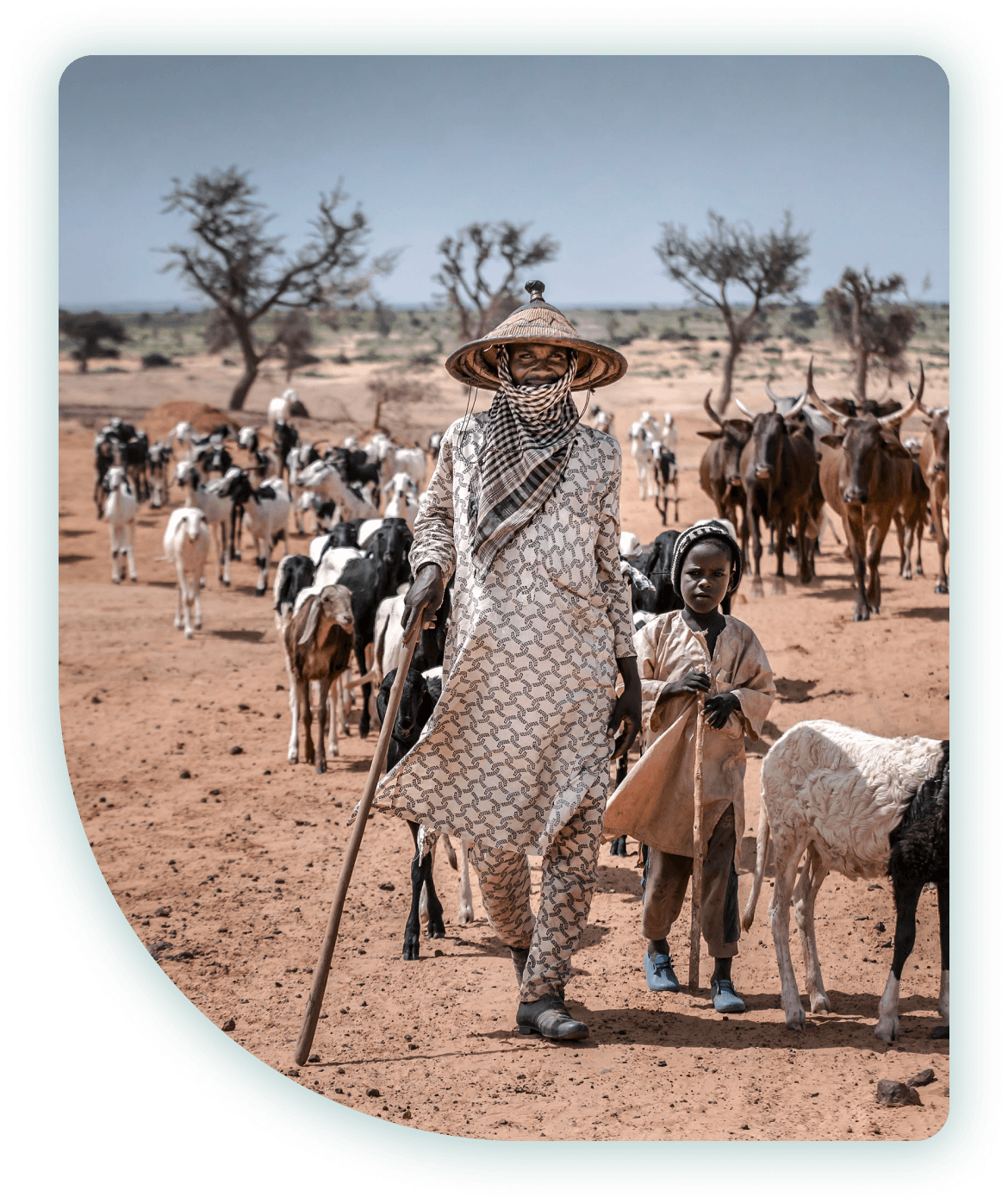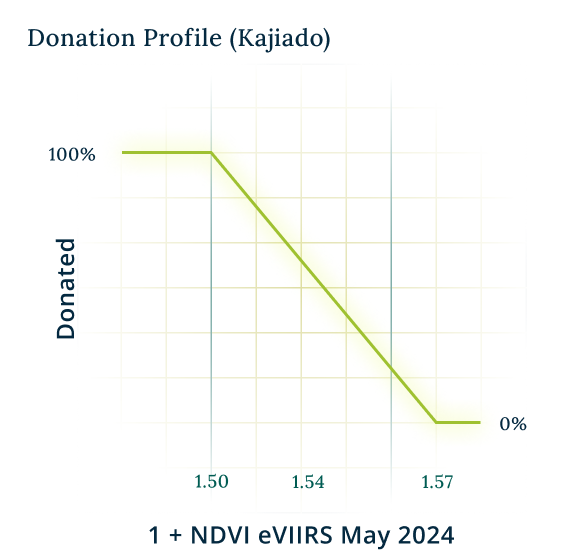Pastoralists Mar-May 2024
A conditional donation campaign to provide anticipatory cash transfers to pastoralist communities in the Kenyan county Kajiado.
Expiry: Jun 10, 2024
This campaign has expired. Stayed tuned for the next one.
About the campaign
- Pastoralists are people whose primary source of income and food is livestock and livestock products. Pastoralist communities live a nomadic lifestyle which entails grazing animals on open-access pastures and migrating with them in response to seasonal variations.
Changing weather patterns induced by climate change are threatening the livelihoods of pastoralists communities in the eastern Horn of Africa. The region is experiencing one of the worst droughts which already resulted in the loss of over 7 million livestock and put millions at risk of starvation in Ethiopia, Kenya, and Somalia.
The goal of this campaign is to provide financial support to enrolled pastoralists in the Kenyan county Kajiado if the pasture conditions, as measured by remote-sensed technology, are deemed distressful. The target cover amount of $75 per pastoralist intends to subsidize the provision of food for one livestock animal over a period of six months.
Sponsors
- This campaign is a joint initiative between Fortune Credit and DIVA Technologies to test the use of blockchain and smart contracts to deliver anticipatory cash transfers ahead of climate shocks to pastoralist communities in the Horn of Africa. It marks the third pilot in the pastoralists campaign series.
Campaign goal
- 133 Pastoralists
- $75 target cover amount per pastoralist
- $10’000 total cover for the campaign
Beneficiaries
- Pastoralists in Kajiado (Kenyan county)
Trigger metric
- The pasture conditions are assessed using an indicator called NDVI (Normalized Difference Vegetation Index). The NDVI is a widely-used metric for quantifying the health and density of vegetation using sensor data. It serves as a reasonable metric for assessing drought as vegetation density generally correlates with rainfall patterns.
For this campaign, the last NDVI value in May 2024 available within the eVIIRS dataset for Kajiado County, Kenya, as published on the USGS FEWS NET Early Warning System website, is used. This value will be reported via the Tellor Protocol on 10th June 2024, with a +1 shift applied for technical reasons. The chosen dataset offers a smoothed NDVI timeseries that corrects low-quality observations caused by clouds or other atmospheric contamination. The donation release profile has been derived by analyzing historical NDVI trends during drought years (2014, 2017, 2022), ensuring a tailored response to drought conditions.
Donation scenarios
The examples provided below illustrate the released donation amounts in % of the deposited funds in specific sample scenarios. These scenarios are based on the donation profiles for the respective pilot locations, with a 50/50 weighting.

Donation Details

Trigger metric1 + NDVI eVIIRS (May 2024)

Expiry10 June 2024, 7:00pm UTC

ReporterTellor Protocol

Data sourceNDVI eVIIRS

Loading...